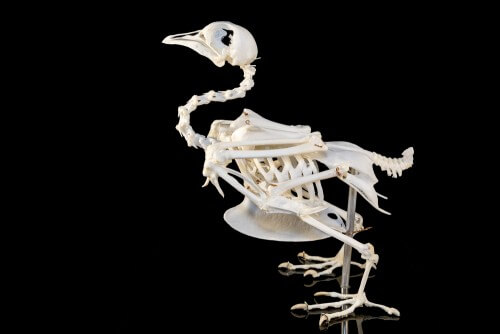A bird's skeleton demonstrates an optimal structure for flight. It is strong, stiff and light.

By: Yael Halfman Cohen
Bird skeletal systems, which excel in their strength and light weight, are a good starting point for the development of strong materials. Already in the 17th century, Galileo described bird bones as hollow and light. The bones are made of a spongy structure of supports with spaces between them. This is one of the recurring structures in nature, which guarantees relative strength to weight.
In the eyes of evolution, the bones of birds are relatively light compared to the bones of their ancestors. They are also relatively light compared to the bones of mammals. A bird bone is the same length as a mammal bone - usually lighter. The relative lightness of the bird's skeletal structure allows minimizing the energy required for flight. The mass of the animal, relative to the surface producing lift, is the key to determining the metabolic cost of flight. Indeed, during the evolution of birds, various adaptations (adjustments) developed to save weight, which are reflected in the structure and shape of the bone, many of these adaptations also strengthen and harden the bone, in addition to reducing its weight.
In a study published in the academic newspaper The Journal of the Royal Society, a comparison was made between the calcium density in the bones of sparrows, rodents and bats, by measuring the bone mass and volume. It was found that, on average, the bone density is higher in the bones of birds and slightly after them in the bones of bats. As bone density increases, so does bone stiffness and strength. An increase in bone density in birds and bats reflects adaptations to maximize bone strength and stiffness, while minimizing its mass and volume.
These data show that not only the shape of the bone has a significant role in the evolution of flight, but also the properties of the bone tissue. This research also explains why bird bones, which look thin and delicate, contribute to body mass as much as terrestrial mammal bones (due to their high density).
Stiffness and strength of the material are two criteria for optimization in the design of components for the aviation world. This is one example of a possible biomimetic application. Do you have any other ideas?

One response
Pterosaur bones were lighter and even stronger than bird bones